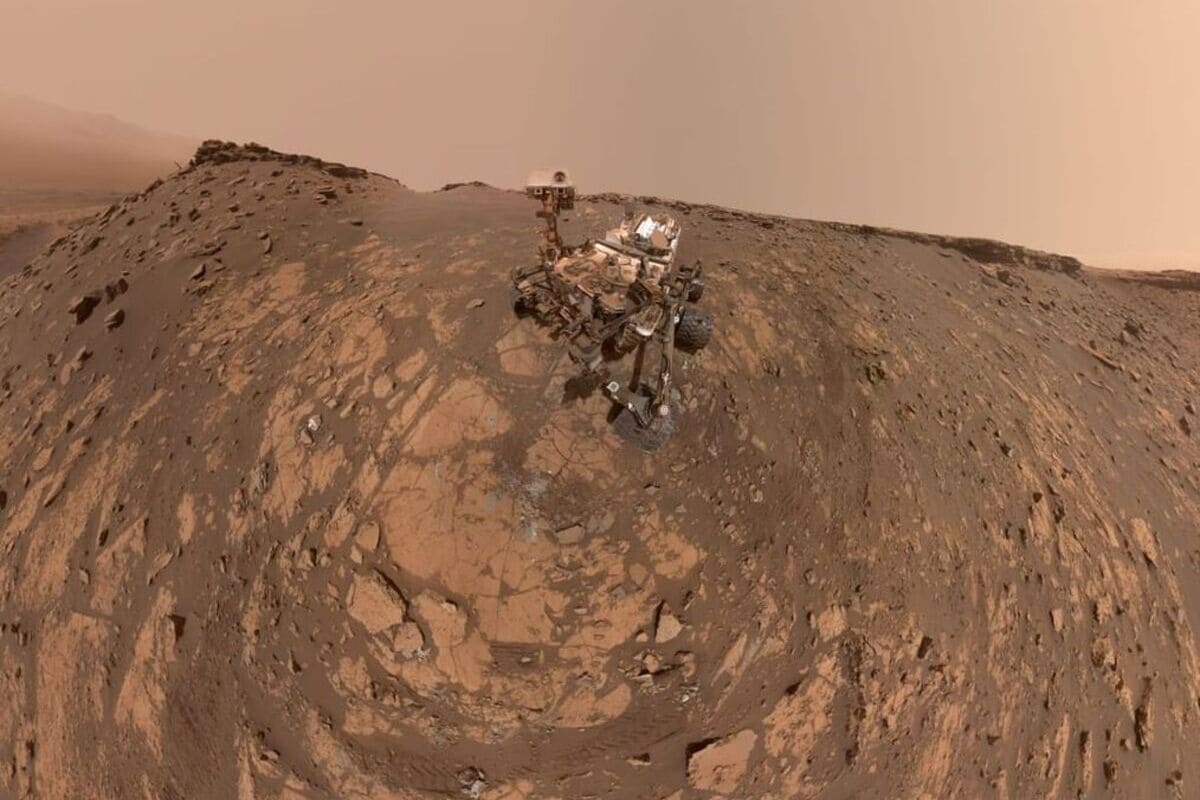Researchers from NYUAD reveal new insights into Mars’ potential for ancient life through water flow
Researchers at New York University Abu Dhabi (NYUAD) have revealed fresh evidence indicating that water once flowed beneath Mars’ surface, suggesting that the planet may have been habitable for life far longer than previously believed.
The findings, published in the Journal of Geophysical Research – Planets, show that ancient sand dunes located within Gale Crater—a site investigated by NASA’s Curiosity rover—gradually transformed into rock after interacting with subsurface water billions of years ago.
Led by Dimitra Atri, principal investigator at NYUAD’s Space Exploration Laboratory, along with research assistant Vignesh Krishnamoorthy, the research team analyzed data from the Curiosity rover in conjunction with rock formations in the deserts of the UAE that developed under analogous conditions on Earth.
Mars’ wet to dry transition
Their research revealed that water from a nearby Martian mountain once permeated the dunes through minute cracks, saturating the sand from beneath and leaving minerals like gypsum behind—the same mineral found in deserts on Earth. These minerals can capture and preserve organic material, making them key targets for future missions in search of evidence of past life.
“Our findings show that Mars didn’t simply go from wet to dry,” Atri stated. “Even after its lakes and rivers disappeared, small amounts of water continued to move underground, creating protected environments that could have supported microscopic life.”
This discovery sheds light on the evolutionary history of Mars and underscores the significance of subsurface environments as promising locations for locating signs of ancient life.
Supported by the NYUAD Research Institute, the study was carried out at NYUAD’s Center for Astrophysics and Space Science, which spearheads cutting-edge research to enhance our understanding of the universe and bolster the UAE’s emerging role in global space exploration. This research collaborated with James Weston from NYUAD’s Core Technology Platform and Panče Naumov’s research group.
Advancing planetary science
The NYUAD research offers a significant advancement in planetary science by providing concrete evidence of persistent subsurface water activity on Mars beyond the era when surface water bodies such as rivers and lakes existed. This extends the habitable window on Mars, crucial for astrobiological research and understanding planetary evolution.
The specific focus on Gale Crater is key, as it is one of the most studied locations on Mars, having been extensively analyzed by NASA’s Curiosity rover since its arrival in 2012. Previous research had established that Gale Crater hosted a variety of aqueous environments billions of years ago. However, the novel aspect of the NYUAD study is the microscopic examination of mineralized dune structures showing water-rock interaction at a level that indicates prolonged seepage of water underground rather than surface flow alone.
By comparing these observations with terrestrial analogs in the UAE desert, known for its gypsum-rich dunes formed under arid conditions with groundwater influence, the researchers could strengthen their interpretation. Gypsum’s role as a mineral that captures and preserves organics adds a compelling dimension to Mars’ potential for harboring life, as these minerals represent not only water activity but also mineralogical archives of biological materials.
Read more: Scientists reveal evidence of oceans, sandy beaches on ancient Mars
Hidden habitats
The persistence of underground water flowing through dune structures suggests that Mars retained microenvironments shielded from harsh surface radiation and extreme temperatures. These subsurface refuges could have provided stable habitats for microbial life even after the decline of surface water bodies, addressing one of the major questions about the planet’s potential for life.
Moreover, this research notably aligns with increasing interest from NASA and international space agencies to target subsurface ice and hydrated minerals for sample collection in upcoming Mars missions. The findings justify focusing future robotic and possibly human missions on locating and analyzing these protected subterranean settings.
UAE’s commitment to space exploration
The study further highlights the growing stature of NYUAD and the UAE in space exploration research. The UAE has been making strategic investments, including establishing the Space Agency, Mars Hope Probe mission (which reached Mars in 2021), and launching ambitious projects like the planned Mars Science City.
NYUAD’s Center for Astrophysics and Space Science, with collaborations such as the Core Technology Platform, underscores a multidisciplinary approach to space research, fostering innovation in planetary geology, astrobiology, and remote sensing technologies that complement international missions.
Unraveling Mars’ water history Mars geological timeline: Mars’ early era, about 3.5 to 4 billion years ago, featured surface water with lakes, rivers, and possibly oceanic bodies. Over time, the atmosphere thinned, and surface water disappeared, leaving subsurface water reservoirs. Curiosity rover contributions: Curiosity has identified clay minerals, sulfates, and sedimentary rocks indicating past water. The identification of mineralized dunes adds another layer of complexity to this environmental history. Astrobiological significance: The discovery of gypsum and other hydration minerals is important because these can preserve biosignatures—chemical or structural markers of past microbial life—which deteriorate rapidly in harsh Martian surface conditions. Comparative planetology: Studying similar Earth analogs, such as UAE deserts and gypsum formations, aids in interpreting Martian data, bridging planetary landscapes with terrestrial processes to better understand morphology and mineralogy. Upcoming missions influence: NASA’s Perseverance Rover and ESA’s ExoMars missions focus on detecting biosignatures in rock samples; this study suggests that targeting mineral-rich dune areas could increase success in finding past life evidence.

